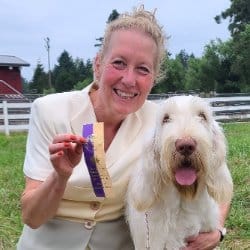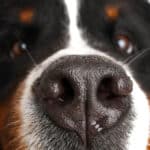
Home » From the Mountains to the Show Ring
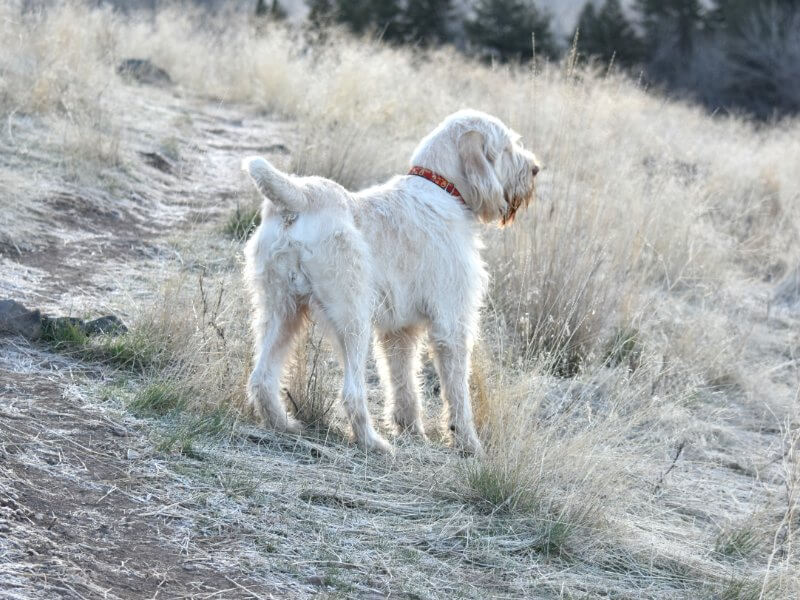
Today’s Spinone Italiano originates from the Piedmont region in Northwest Italy. During the 19th century, it was the most important hunting breed in that area.
Piedmont, in both French and Italian and other variants, comes from the medieval Latin Pedemontium or Pedemontis, meaning “at the foot of the mountains” (referring to the Alps).
The Piedmont region is surrounded by the Alps. It borders with France, Switzerland and the Italian regions of Lombardy, Liguria, Aosta Valley and a tiny part of Emilia Romagna. Piedmont is 43.3 percent mountainous and 30.3 percent is vast areas of hills with just 26.4 percent being plains or wetlands.
The Spinone, with its two-segmented topline, solid underline and minimal tuck-up, long hock-to-paw length and moderate bend of stifle was not built for super speed. This hunting dog hunted the foothills and mountainsides of the Alps for upland game birds, fox and rabbit, and down low in the plains and swampy, thick wetlands for waterfowl.

It is said that during WWII, the Spinone was used by the Italian partisans to track enemies and to carry food. Speed was not required. A strong, substantial and unhurried yet steady-going dog was needed—and that was the Spinone.
So, all that said, the Spinone is not slow. A descriptor word in our Breed Standard is “methodical.” Methodical does not mean slow. The definition of methodical is orderly and systematic in habits or behavior. Obviously, a Spinone is not as fast as a Pointer or German Wirehaired Pointer or Weimaraner or even the Wirehaired Pointing Griffon and Brittany. But not being as fast as those other pointing breeds does not, thereby, mean the Spinone is slow. Not being as fast as the other pointing breeds does not mean the Spinone should go around the ring like a turtle, with its handler walking. We had that happen once; the judge kept telling us to “slow down, slow down!” to the point where we were all literally walking. It was ridiculous!
So while the other pointing breeds are faster and look much more flashy in the field, often going back over the same piece of ground more than once, the Spinone, with its easy, pounding trot that goes the distance, is determined as it covers the ground in an orderly and systematic fashion, not going back and forth over the same ground. I suppose, to some, that may appear slow.
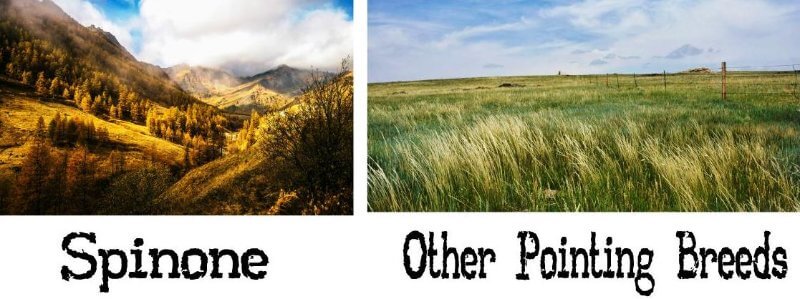
As I mentioned earlier, the Spinone has a solid underline and minimal tuck-up. That does not mean no tuck-up or zero tuck-up. There is a tuck-up and it is minimal. To quote the Italian Breed Standard:
“The ribs are well sprung and slanting with wide space between them. The back ribs (false ribs) are long, oblique and well opened. Underline and belly: Almost horizontal in the sternal region, then ascends slightly towards the belly.” The belly is not the tuck-up.
The Spinone has a two-piece topline. It is NOT a sway back. The first segment slopes slightly downward from the withers to the 11th thoracic vertebra. You may not always obviously see “the break,” especially in the very young Spinone, but it is there—you can feel it. The second segment of the topline rises gradually and continues into a solid and slightly convex loin without rising above the withers.
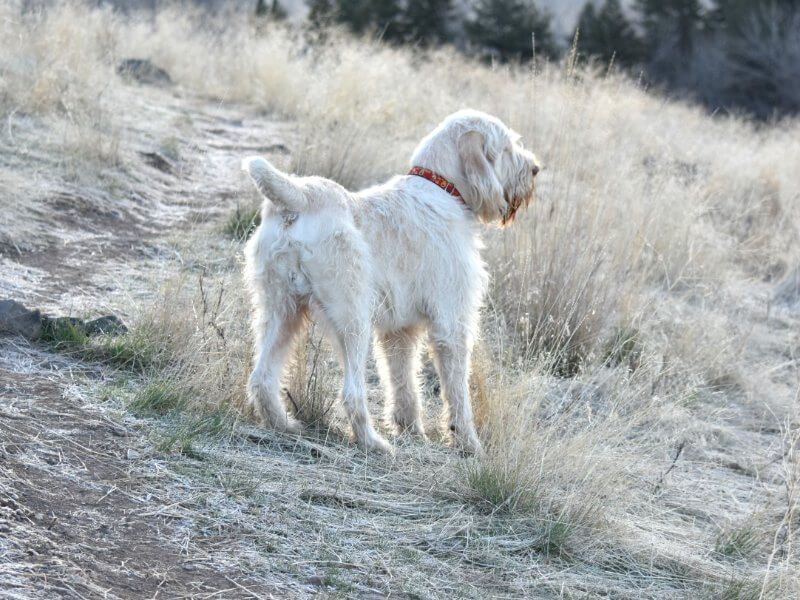
The Spinone’s large paws give it the sure-footedness and stability to hunt in the hilly and mountainous terrain, as does the long hock-to-paw distance.
From the AKC Spinone Breed Standard: “The distance from the point of the hock to the ground is about one-third of the height at the withers, and the rear pastern is strong, lean and perpendicular to the ground.”
Stealing another quote from the Italian Breed Standard: “The hocks must be perpendicular to the ground; seen from behind, the hindquarters are parallel.”
That means no cowhocks. Living in Montana, I can tell you that I have yet to see a Pack Mule or Big Horn Sheep or Mountain Goat with cowhocks.
The Spinone should not race around the breed ring or be at the very front of the Sporting Group. Even if one has a Spinone that can do that, it should not be presented that way. You can always spot the handler who does not know the breed when they compete for that spot at the front of the Group and zoom around the ring rather than presenting the Spinone at a moderate pace to show off the Spinone’s classic loose, pounding trot.
I am reminded of the great handler Colton Johnson and the way he purposely handled his Old English Sheepdog in the way the breed should be presented and was not swayed by peer pressure or by judges wanting a happy-go-lucky generic American show dog. Many years ago, Colton showed one of my Spinoni a few times in exactly the same way—unhurried and how it should be done.
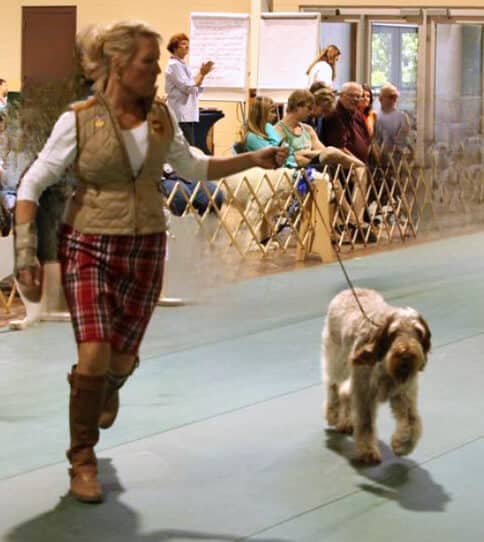
Similarly, a Spinone should never ever be strung up on its lead. A Spinone is to be shown on a loose lead. Why? Well, if you unnaturally pull up a Spinone’s head to, again, show it in the generic American show dog way, not only does that flatten out the topline in movement but it also does not showcase the Spinone’s unique head with its diverging head planes and nose pointing downward in order to pick up scent. Just remember the head and tail together—loose lead with the head low and out in conjunction with the tail that is carried parallel to the ground or down, never up. Thank you for taking the time to learn more about our unique breed.
